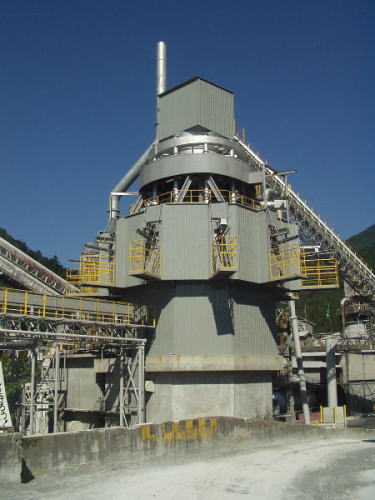In a conventional shaft kiln, it is well known that size of limestone should
be sieved to 30 - 80 mm in order to have combustion gas flowing through
the high bed of limestone.
However, nearly 45% of mined limestone
usually goes to small size, less than 30mm, which cannot be processed in
conventional shaft kilns. Rotary kilns and fluidized bed calciners have been
applied to deal with such undersize limestone so far; nevertheless, their low
thermal efficiency and high construction cost are not economical for production
of small or medium scale.
The CHISAKI LIME KILN was developed to calcine limestone and other inorganic
materials of 10 - 35 mm by application of moving bed principle, assuring
the high thermal efficiency and reasonable construction cost. More than
30 units have been constructed and under operation as scheduled, making
good use of undersize limestone and dolomite with high thermal efficiency.
|
 |
|
According to academic investigations, necessary
time for complete calcination of a limestone is proportional to the square of
its diameter. Thus, 1/4 of the residence time is enough in the calcination zone
for 20 mm limestone, compared with 40 mm one. At a given throughput of
limestone, volume of calcination zone in a shaft kiln could be drastically
reduced when limestone of small size can be used.
In addition, a bed of 20 mm solids has
twice of surface area for heat transfer compared with a bed of 40 mm solids,
and heat transfer coefficient for the former is 50% larger than the latter. Therefore,
better heat exchange is surely carried out in the moving bed of 20 mm solids.
Serious drawbacks of the smaller size usually encounter in any shaft kiln of conventional design. First one is the high pressure drop, which hinders the necessary gas stream to flow through the bed. Second, mal-distribution of flowing gas is apt to occur, resulting in poor contact between solids and gas streams. Conventional shaft kilns have hardly overcome the above two barriers, proving it inevitable to use limestone of such large size as mentioned above.
|

